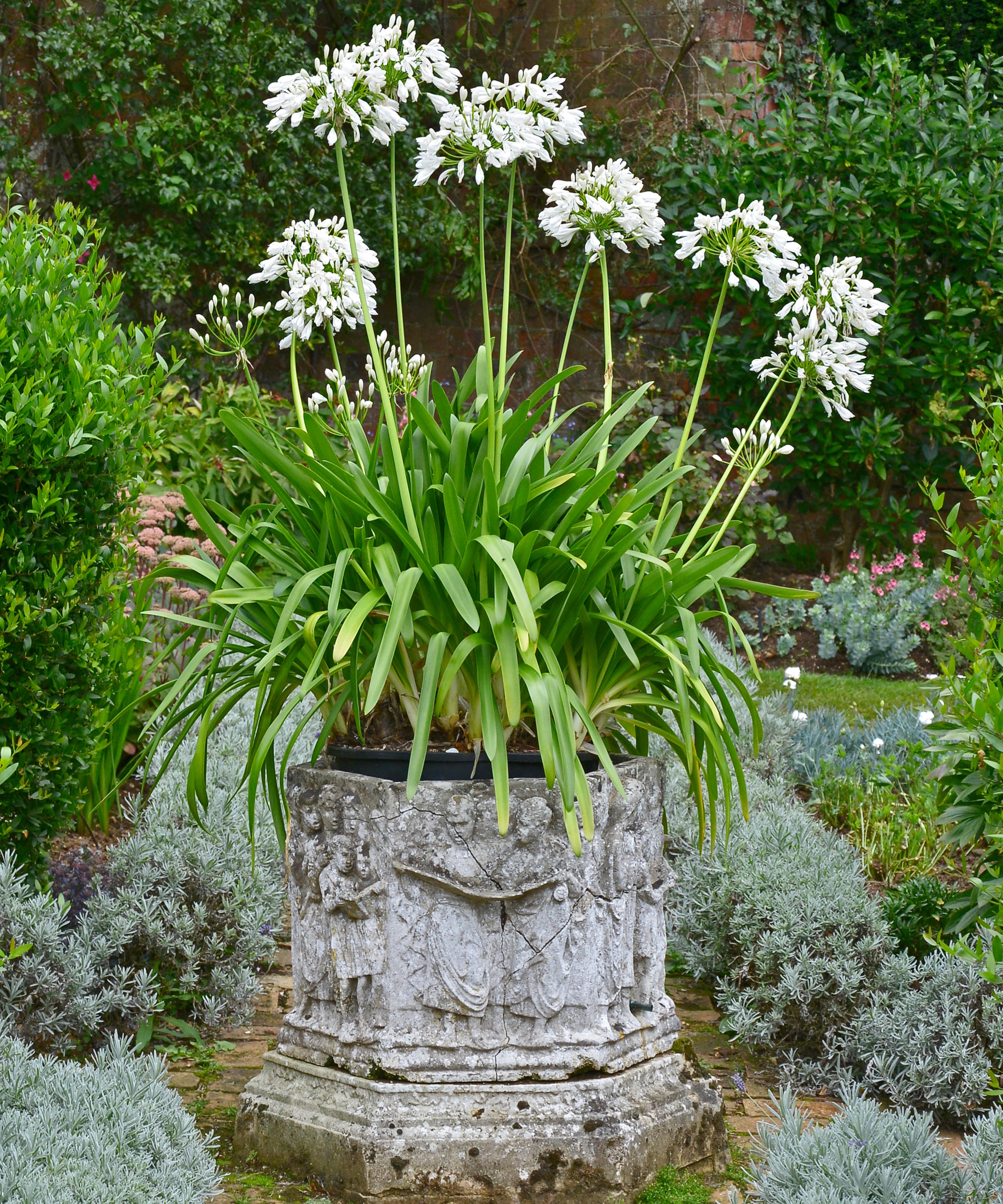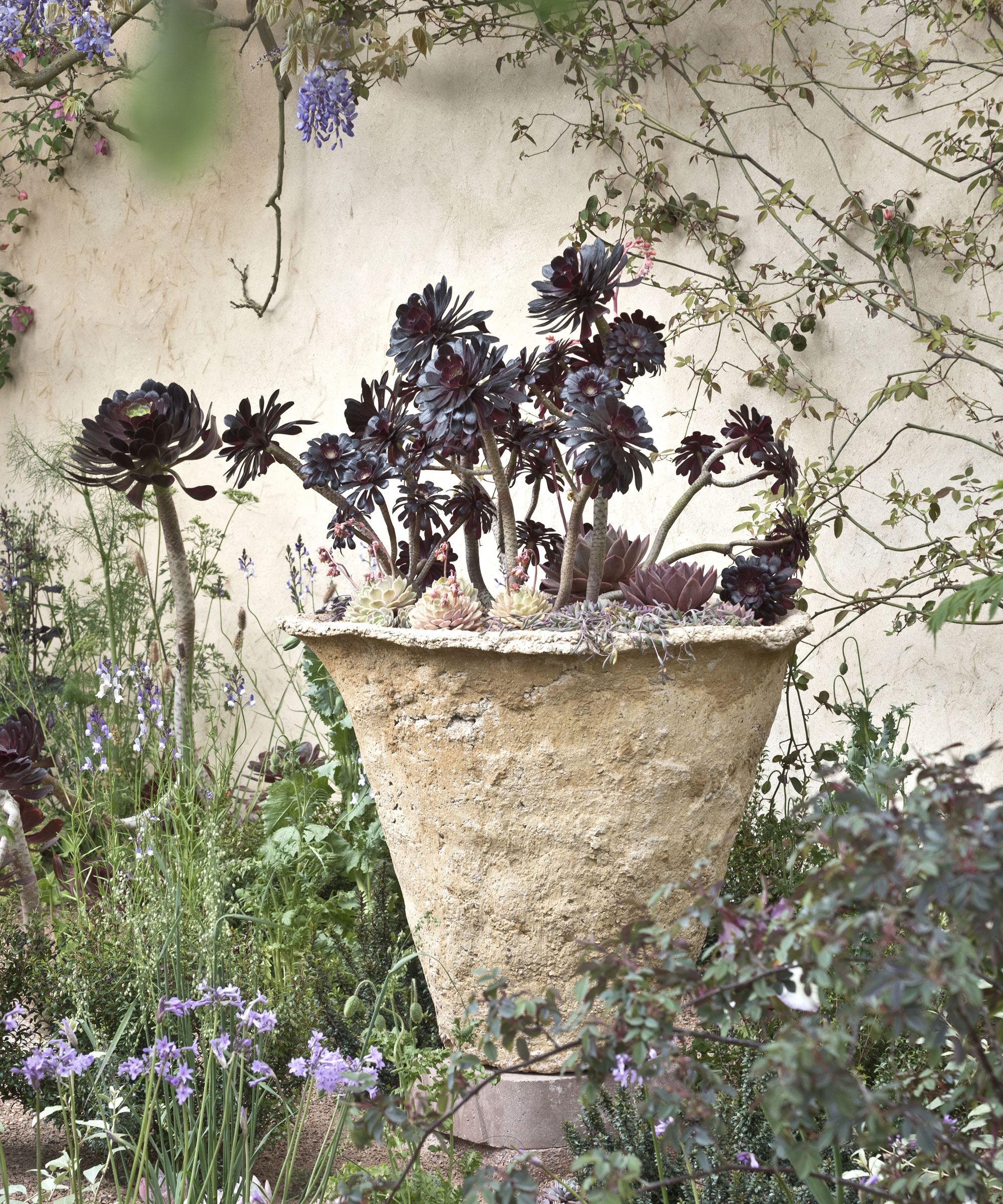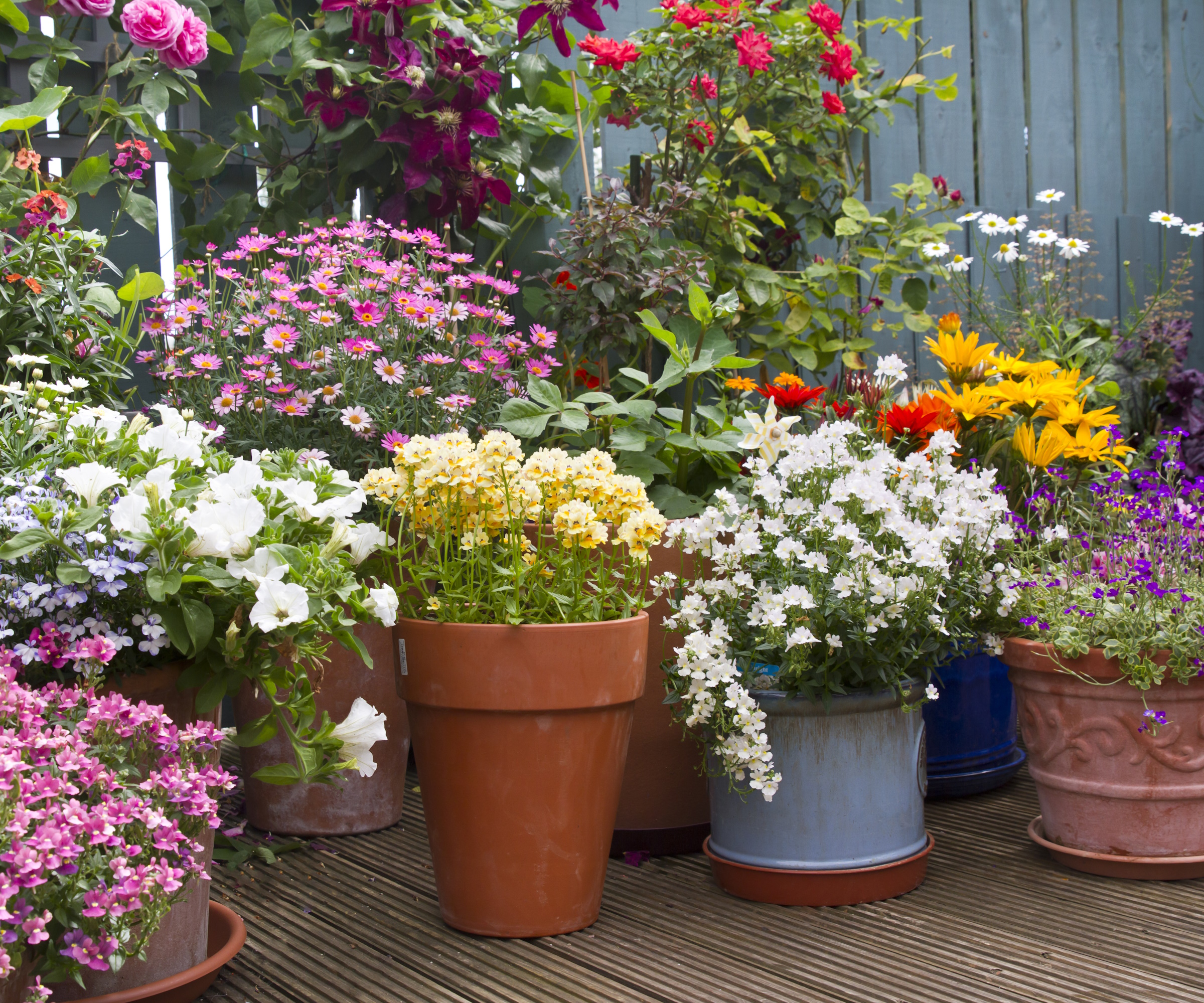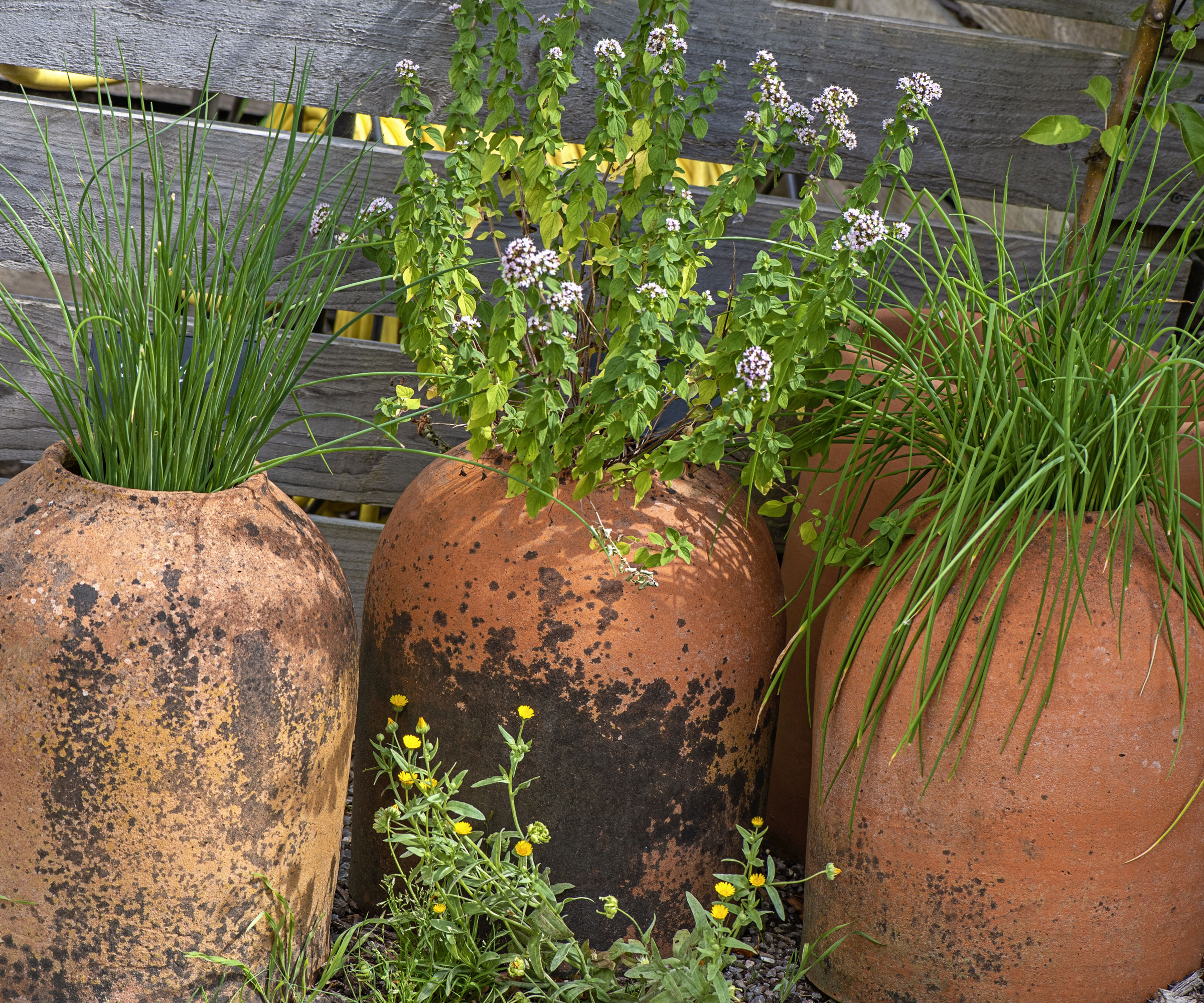5 things you should never use to fill the bottom of a large planter – or risk trouble for your plants in the long run
They may be quick and affordable solutions, but these materials won't serve your container garden well


As a keen container gardener (both indoors and in the garden), I love the look of large, statement planters filling gaps in my display. However, there's no denying filling them with potting soil can be expensive, which is why I turn to other solutions to fill up pots.
When container gardening, there are plenty of things you can use to fill the bottom of a large planter that will add drainage and stop you having to invest in so much potting soil, such as gravel. But, there are equally things you should never use to fill the bottom of a large planter. These materials in question can actually cause problems for your plants, blocking drainage, decomposing too quickly, and making them susceptible to rot and fungal diseases.
That's why it's best to be aware of which materials to avoid when deciding how to fill your large containers. Here, I take a look at five items to never use and why they can hinder your container growing.

5 things to never fill the bottom of a large planter
Using things you should never use to fill the bottom of a large planter is actually a container gardening mistake that can heavily impact things like root health and moisture management in pots. A wise selection is therefore needed when looking for solutions to fill statement containers, and I recommend steering clear of these five thing:
1. Non-porous materials

When researching how to fill up large planters in my own container garden, this is the first thing that came up on the ban list.
This is because the best container plants need good drainage in order to grow well. If you have a solid material blocking an escape route for excess moisture, you essentially trap too much water in the pot.
The results can be anything from root rot, to fungal issues, and even the death of a plant.
Design expertise in your inbox – from inspiring decorating ideas and beautiful celebrity homes to practical gardening advice and shopping round-ups.
Some items to avoid under this category include:
- Plastic sheets
- Solid pieces of glass and ceramic
- Concrete blocks
Instead, opt for materials that are porous, such as these container garden pebbles from Amazon or wood chips.
To help you water plants in containers correctly, consider also using a soil moisture meter (from Amazon) to monitor moisture levels.
2. Untreated lumber

While wood chips can be beneficial to put in the bottom of large planters, adding air pockets for drainage and providing essential plant nutrients as they break down (like nitrogen), it's not always wise to use untreated lumber.
This is primarily because untreated lumber is a material that will rot quickly when exposed to moisture. This may cause plant roots to also rot and/or cause mold and mildew, possibly even attracting pests that destroy plants.
Lumber is also likely to attract insects like termites and carpenter ants, which risks an infestation in your planter.
Not only this, but untreated lumber will decompose quickly in the moist environment of a planter. This means you will find yourself needing to top up the soil in your planter much sooner than expected; counterproductive to saving money on potting soil.
Some wood materials that are better alternatives include composite lumber or cedar, which is a wood known to be rot-resistant.
3. Garden soil

The thought of using garden soil in the bottom of my large planters has crossed my mind. It would be inexpensive, use resources I already have, and take little time to do. But, if there's anything I've learnt about soil types, it's that you need to use the right one for the right plants.
Garden soil tends to be far too dense and compact for container gardening. It's also much more susceptible to becoming waterlogged, once again risking issues of rot and fungal disease.
The best soil for container gardening is rather a mix that is looser than garden soil to aid drainage. Plus, commercial potting soil (like this one from Amazon) tends to be formulated with the best mix of nutrients to support container growing.
4. Plastic liners

I'm always looking for eco-friendly garden ideas to take on board in my yard, which is why plastic liners make my list of things you should never use to fill the bottom of a large planter.
There's a lot to be said for non-toxic gardening swaps like using a plastic-free liner. The microplastics in plastic liners can leech into the soil and contaminate your plants, something to keep in mind if you have a container kitchen garden in particular.
Other reasons to avoid a plastic liner, especially one without any holes, is that it blocks drainage. This will oversaturate roots, prevent airflow, and can promote the growth of algae and mold.
Not only this, but plastic liners can also warm up very quickly, trapping heat on sunny days and potentially damaging plant roots.
Instead, try using a porous coco coir liner (from Amazon).
5. Grass clippings and weeds

These are important items on the list of things you should never use to fill the bottom of a large planter, but for two different reasons:
It's true grass clippings are beneficial when making your own compost, as they add lots of green, nitrogen-rich material to your heap. The problem with using them directly to fill the bottom of your planter, however, is they'll soon breakdown and you'll be left having to top up your soil.
Weeds pose a slightly different problem. You could find that using this garden waste to fill the bottom of a larger planter results in more weeds growing in your pot, stealing nutrients from your plants. This is especially true if the weeds have seeds.
Instead, it's best to add garden waste to compost and to get rid of weeds in a way that will prevent them coming back.
FAQs
Can I put cardboard in the bottom of my planter?
Yes, you can use cardboard to fill the bottom of a large planter. Not only will it save money on extra potting soil, you can also use cardboard to smother weeds in this way. Plus, cardboard tends to be porous and will allow excess moisture to run through. Over time, the cardboard will decompose, so ensure it is plain without any ink or plastic stickers.
I'll be staying away from these items next time I add a large planter to my collection. They should also be avoided when repurposing household items as unusual planters for the same reasons listed above. Instead, choose items for your planter that add drainage, like gravel and even crushed cans.

Tenielle is a Gardens Content Editor at Homes & Gardens. She holds a qualification in MA Magazine Journalism and has over six years of journalistic experience. Before coming to Homes & Gardens, Tenielle was in the editorial department at the Royal Horticultural Society and worked on The Garden magazine. As our in-house houseplant expert, Tenielle writes on a range of solutions to houseplant problems, as well as other 'how to' guides, inspiring garden projects, and the latest gardening news. When she isn't writing, Tenielle can be found propagating her ever-growing collection of indoor plants, helping others overcome common houseplant pests and diseases, volunteering at a local gardening club, and attending gardening workshops, like a composting masterclass.